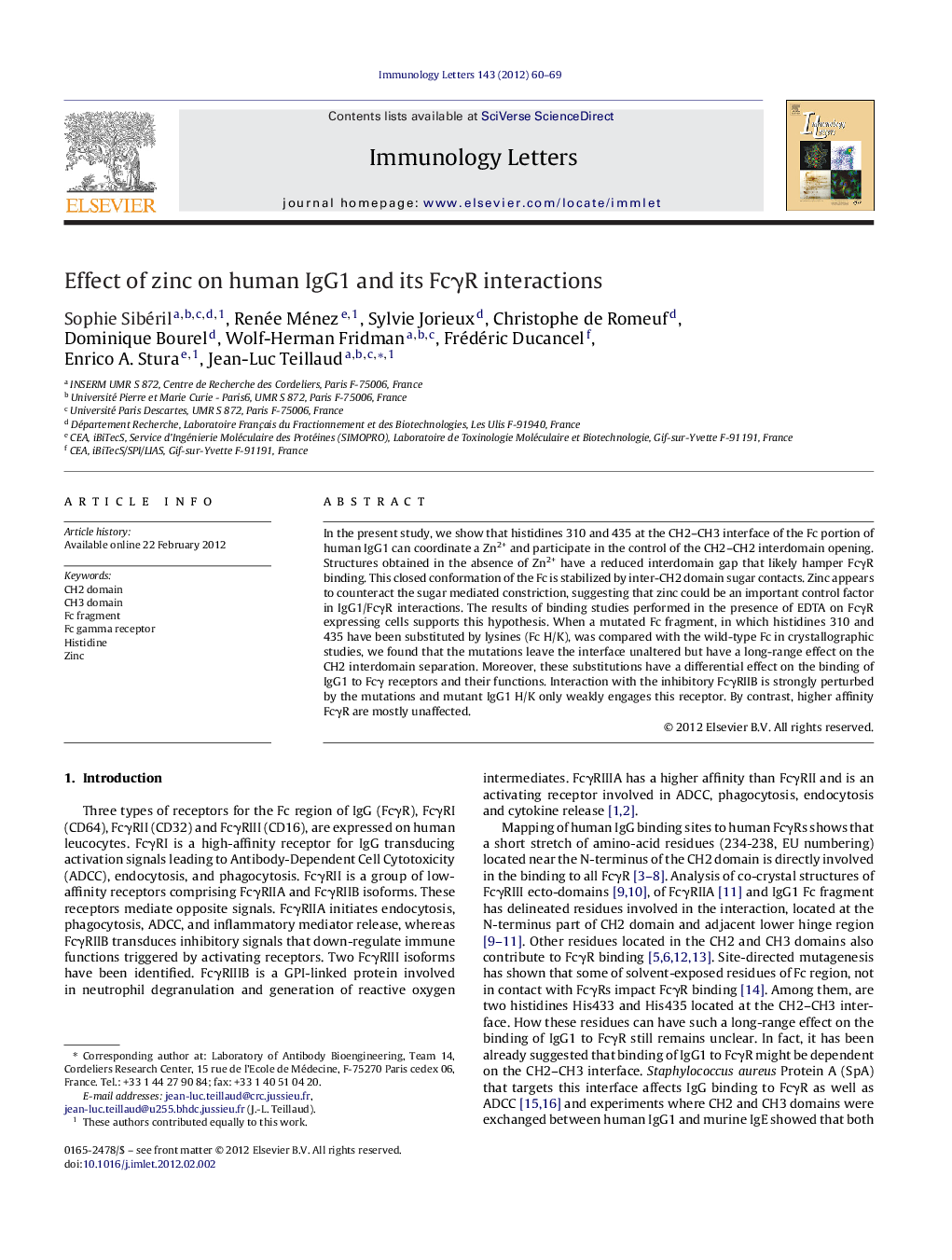| Article ID | Journal | Published Year | Pages | File Type |
|---|---|---|---|---|
| 3355647 | Immunology Letters | 2012 | 10 Pages |
In the present study, we show that histidines 310 and 435 at the CH2–CH3 interface of the Fc portion of human IgG1 can coordinate a Zn2+ and participate in the control of the CH2–CH2 interdomain opening. Structures obtained in the absence of Zn2+ have a reduced interdomain gap that likely hamper FcγR binding. This closed conformation of the Fc is stabilized by inter-CH2 domain sugar contacts. Zinc appears to counteract the sugar mediated constriction, suggesting that zinc could be an important control factor in IgG1/FcγR interactions. The results of binding studies performed in the presence of EDTA on FcγR expressing cells supports this hypothesis. When a mutated Fc fragment, in which histidines 310 and 435 have been substituted by lysines (Fc H/K), was compared with the wild-type Fc in crystallographic studies, we found that the mutations leave the interface unaltered but have a long-range effect on the CH2 interdomain separation. Moreover, these substitutions have a differential effect on the binding of IgG1 to Fcγ receptors and their functions. Interaction with the inhibitory FcγRIIB is strongly perturbed by the mutations and mutant IgG1 H/K only weakly engages this receptor. By contrast, higher affinity FcγR are mostly unaffected.
► CH2–CH3 interface of huIgG1 binds a zinc cation through histidines 310 and 435. ► Zinc binding stabilizes an open Fc conformation favoring FcγR binding. ► Absence of zinc (His/Lys mutant, use of EDTA) lowers the opening between CH2 domains. ► Absence of zinc prevents huIgG1 binding to and activation of FcγRIIB not FcγRIII. ► Binding of mAbs to various FcγR can be modulated by affecting zinc coordination.
